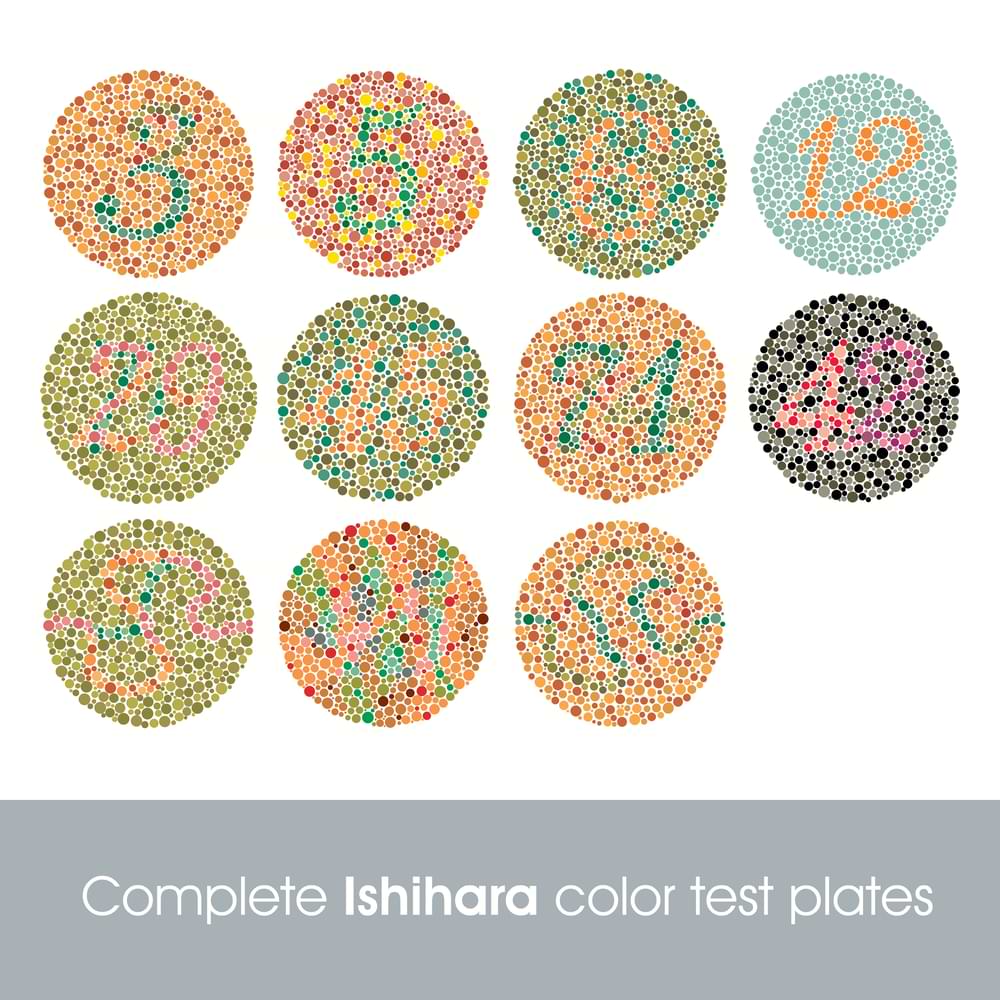Children’s Vision and Colour Blindness

How can you tell if your child sees colours the same way you do? With approximately 350 million people worldwide affected by colour blindness, it’s more common than many parents realise—yet it often goes unnoticed until children struggle with colour-based activities at home or in school.
I’m Minh Van Tran, Owner and Principal Optometrist at VisionPro Optometrists in Footscray and St Albans. I’ve been helping families understand and manage vision concerns since founding VisionPro in 2008. Colour blindness is one of the many conditions that can impact a child’s learning and daily life, and early detection is key to ensuring they get the right support.
While there’s no cure, simple strategies—like assistive tools, contrast-based learning materials, and small adjustments in daily routines—can make a big difference. If you’re concerned about your child’s colour vision, booking an eye test is the first step toward giving them the tools they need to navigate a world built around colour.
KEY TAKEAWAYS
- Colour blindness is not just seeing in black and white—many children have difficulty distinguishing certain shades, particularly reds and greens.
- Genetics is the primary cause, with the condition passing through the X chromosome, though some cases develop later due to medical conditions.
- There are different types of colour blindness, ranging from mild red-green deficiency to complete colour blindness, where only shades of grey are visible.
- Early signs appear in childhood, such as struggles with colour-coded activities, difficulty matching clothes, or confusion with traffic light colours.
What Is Colour Blindness?
Why do some children struggle to tell the difference between red and green, even when it seems so obvious to others? Colour blindness, or colour vision deficiency (CVD), is a condition where the eye doesn’t perceive certain colours accurately. It’s a common misconception that people with this condition only see in black and white. In reality, most have trouble distinguishing specific shades, particularly between reds and greens.
The way we see colour depends on specialised cells in the retina called cone cells. These cells detect red, green, and blue light, which our brain then processes into the full spectrum of colours. If one or more types of cone cells are missing or not functioning properly, colour vision is affected. This can make everyday tasks like choosing matching clothes or reading coloured diagrams more challenging.

Causes of Colour Blindness
Why do some children inherit colour blindness while others develop it later? The condition stems from two main causes: genetics and acquired factors. Understanding these causes helps in recognising when a child may need a colour vision assessment.
Colour blindness is most often passed down through the X chromosome, which is why the most common type affects 8% of males but only 0.5% of females . A mother can carry the gene without being colour blind herself and still pass it to her son. This inherited form remains stable throughout life.
Some individuals lose colour vision due to eye diseases, brain injuries, ageing, or vitamin A deficiency. Conditions like macular degeneration, cataracts, and diabetic retinopathy can progressively impair colour perception. Unlike inherited cases, acquired colour blindness may worsen over time.
Recognising whether colour blindness is inherited or acquired helps determine the best approach for managing its impact on daily life.
Types of Colour Blindness
Colour blindness varies in severity, affecting how individuals perceive certain colours. While some people have minor difficulties distinguishing specific shades, others struggle to differentiate entire colour groups. The most common form affects reds and greens, while a rarer type impacts blues and yellows. In extreme cases, a person may see only in black, white, and grey. Understanding these differences helps in recognising the unique challenges faced by those with colour vision deficiency.
- Red-Green Colour Blindness (Most Common): This is the most prevalent type, making reds and greens hard to tell apart. It primarily affects men due to its genetic link to the X chromosome. Protanopia causes reds to appear darker or brown, while deuteranopia makes greens blend with yellows and browns. Everyday tasks like reading charts or identifying ripe fruit can be difficult.
- Blue-Yellow Colour Blindness (Less Common): Known as tritanopia, this rare form affects blue cone cells, making blues and greens, as well as yellows and pinks, difficult to distinguish. Unlike red-green deficiency, this type can also develop later due to eye diseases or nerve damage. It can make tasks like reading colour-coded warnings or distinguishing sky from grass more challenging.
- Complete Colour Blindness (Very Rare): Also called monochromacy, this condition eliminates all colour perception, reducing vision to shades of grey. It results from non-functioning cone cells and often includes additional vision problems, such as light sensitivity and reduced clarity. Those affected must rely on brightness and contrast rather than colour.
Recognising the different types of colour blindness highlights the unique difficulties individuals may face. While some experience only mild inconveniences, others require adaptations to function in a world designed for full-colour vision.
Signs and Symptoms of Colour Blindness in Children
How can parents tell if their child is colour blind? Many children don’t realise they see colours differently from others, so the signs can be subtle.
One of the earliest indicators is difficulty identifying colours correctly beyond the age of four. If a child consistently mixes up reds and greens or struggles with colour-based activities like sorting blocks, it may be worth investigating. Some children avoid colouring tasks or pick unusual shades for familiar objects—like colouring tree leaves brown instead of green.
In school, colour blindness can cause challenges with charts, diagrams, and colour-coded learning materials. Some children also struggle with activities like choosing matching clothes or recognising the colours of traffic lights.

How Colour Blindness Is Diagnosed
Can a simple test confirm if a child is colour blind? Fortunately, yes. There are several reliable ways to assess colour vision, even at a young age.
The Ishihara Test is a widely used colour vision test designed to detect red-green colour blindness. Developed by Dr. Shinobu Ishihara in 1917, it consists of a series of plates with coloured dots forming numbers or patterns. Individuals with normal colour vision can distinguish the numbers, while those with colour deficiencies may struggle to see them. The test is quick, non-invasive, and commonly used by optometrists and ophthalmologists to assess colour perception, especially for professions requiring accurate colour differentiation.
Parents should consider testing if their child struggles to recognise colours by age four or shows signs of confusion in daily activities. If colour vision appears to be worsening, an eye exam is essential to rule out medical causes.
Can Colour Blindness Be Treated or Corrected?
Is there a cure for colour blindness? Unfortunately, inherited colour blindness cannot be reversed. The condition is caused by differences in the eye’s cone cells, and there is no medical treatment to restore normal colour vision.
However, management strategies can help. Special colour-enhancing glasses and contact lenses may improve colour perception for some individuals, though they don’t work for everyone. Technology also plays a role—smartphone apps can adjust screen colours, and software tools can modify digital content to make it easier for colour-blind individuals to distinguish shades.
While colour blindness cannot be fixed, adapting daily routines and using assistive tools can make a big difference.
To learn more about some of the innovative colour enhancement lenses which are now available, watch the following video by Dr. Ian Rosser.
Living With Colour Blindness
How do children with colour blindness adapt to a world built around colour? While challenges exist, practical strategies can make daily life easier.
Simple adjustments help with everyday tasks. Memorising traffic light positions, using patterns or textures instead of colours for organisation, and labeling clothing can prevent frustration. Schools can support colour-blind students by avoiding colour-dependent materials and offering high-contrast visuals.
Certain careers, like piloting or electrical work, require normal colour vision, but many professions don’t. Early awareness allows children to explore career paths where colour perception isn’t a barrier.
The Importance of Early Detection
Why is early detection of colour blindness so important? Identifying the condition early allows children to adjust, minimises frustration, and ensures they receive the right support at home and in school.
Parents and teachers can make simple changes, such as using clear patterns, contrast, and descriptive cues instead of relying solely on colour. When educators are aware, they can adapt lesson materials to avoid colour-dependent tasks that may create unnecessary challenges.
With timely diagnosis, children can develop techniques to navigate daily activities with confidence. The right support makes all the difference.
Final Thoughts
Colour blindness can affect a child’s daily life in ways that aren’t always obvious. From challenges with learning materials to difficulties in everyday tasks, recognising the signs early can make a significant difference. While there’s no cure, the right strategies—such as special lenses, assistive tools, high-contrast learning materials, and simple adjustments at home—can help children adapt with confidence.
If you suspect your child may have colour vision deficiency, a professional eye exam is the best way to confirm it. Let’s assess their vision and provide the guidance they need to succeed.
Click on the “BOOK AN APPOINTMENT” button OR call either our St. Albans (03) 9364 5509 or Footscray (03) 9687 8787 optometry practices.
Want to test your knowledge about Children’s Vision?

Minh gained his Bachelor of Optometry in 2000, and his Certificate in Ocular Therapeutics (ACO) in 2016.
He started VisionPro Optometrists in 2008 and has been Principal Optometrist ever since, working in both the Footscray and the St Albans practices.
Minh is a member of Optometrist Association Australia and the ACO. He always strives to achieve the highest standard of professionalism when delivering eyecare to all his patients.
Minh’s special areas of interest include ocular diseases and management, children’s vision and contact lens fitting. Minh enjoys travelling and reading in his spare time.
